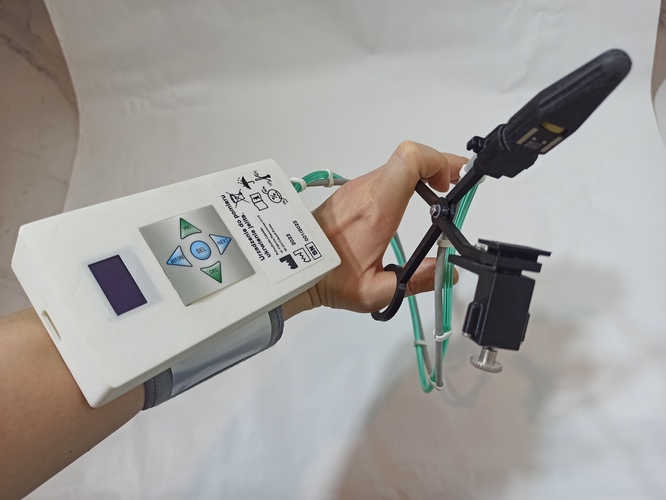Scientists from the Medical University of Gdańsk (MUG) and the Gdańsk University of Technology under the supervision of Prof. Jacek Zieliński from the MUG Department and Clinic of Oncological Surgery have developed an innovative device for intraoperative blood flow testing in the organs of the gastrointestinal tract. Their solution may significantly increase the effectiveness of the performed surgical procedures by reducing the number of potential postoperative complications.
The device was carried out as part of the project “Method and device for the combined assessment of blood supply to the organs of the gastrointestinal tract”. The funds for this purpose in the amount of PLN 100 thousand PLN was allocated entirely from the Innovation Incubator 4.0 program, which is financed from European funds as part of the non-competitive project “Support for scientific research management and commercialization of R&D results in research units and enterprises”. It is implemented under the Intelligent Development Operational Program 2014-2020 by the MUG’s Technology Transfer Center.
Prof. Jacek Zieliński explains, that in surgery, the blood supply to the tissues is the basic condition that guarantees proper wound healing. This principle applies to all types of operations, but the proper blood supply to the tissues is of particular importance in gastrointestinal surgery and during extensive operations in other parts of the body. In the case of the gastrointestinal tract, the blood supply disorder is closely related to the level of resection, starting with the esophagus and ending with the distal area, i.e. the rectum.
Prof. Zieliński, created an interdisciplinary team in consultation with scientists from the Department of Biomedical Engineering, Gdańsk University of Technology to find an effective solution.
Thanks to the synergy of the application of practical clinical knowledge with bioengineering and the use of several measurement methods, they created the world’s first system for the combined assessment of gastrointestinal blood flow. The set consists of a probe equipped with measuring sensors and an electronic control unit. During the surgical procedure, the probe of the device is inserted, for example, into the intestine providing information on the degree of oxygen saturation of the tissues. This makes it easier to perform anastomosis ensuring proper wound healing.
The introduction of the device for use during surgical procedures may significantly reduce the rate of postoperative complications.
Adrian Andrzejewski





